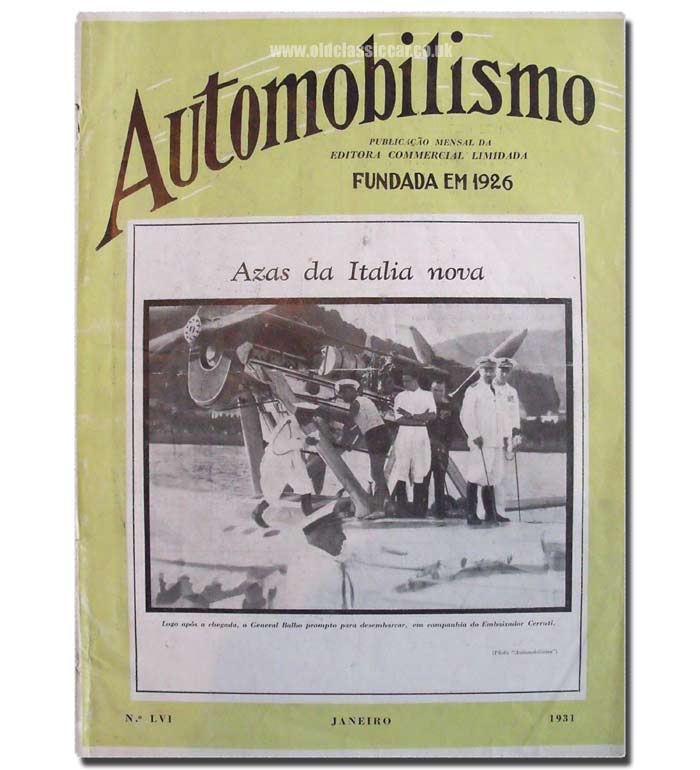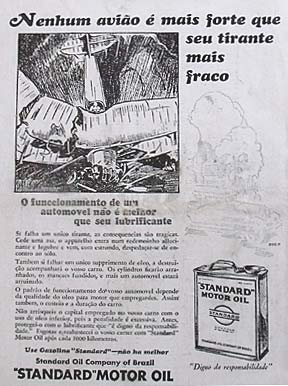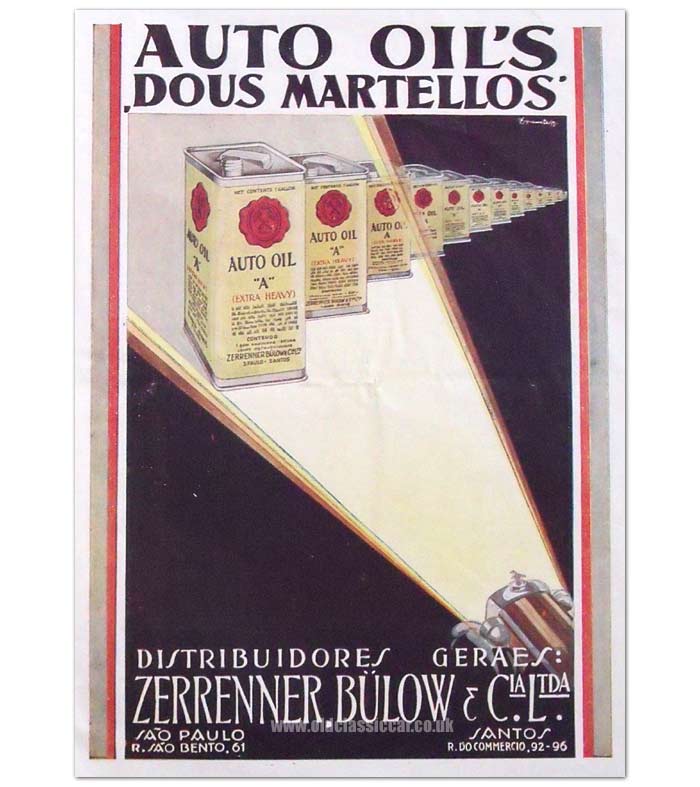Automobilismo magazine.
Most of the publications described in the motoring magazines corner of the site are, understandably, aimed at English or American readers. This though hails from South America, Brazil to be precise, and of course is written in their native Brazilian (Portuguese). The gist of what the articles are discussing can be deduced though, in part thanks to online translation tools. This issue of Automobilismo was published in São Paulo for January, 1931, and runs to just 24 pages. The cover features not a car, but instead a Savoia-Marchetti S.55 flying boat, one of twelve such machines that visited Rio de Janeiro en masse on 17th December 1930, staying until 15th January 1931, the squadron led by Italo Balbo - then Minister of the Air Force in Italy.
|
|
General Balbo himself is shown stood alongside the centrally-mounted engines of the Savoia-Marchetti. Sources online suggest that the engines were by Isotta-Fraschini, although references in the magazine point to Fiat engines being fitted. Note the "pusher" "puller" arrangement, where one engine faces forwards and the other rearwards, on this innovative twin-hulled, triple-finned, amphibian. The S.55 would see military use not just with the Italian Regia Aeronautica, but also the Brazilian Navy, the Spanish Air Force, and the Romanian Air Force. Just one example survives, coincidentally at a museum in São Paulo.
|

|
|
The rear cover features an advertisement for "Standard" Motor Oil, produced by the Standard Oil Company of Brazil. A ghostly illustration of a speeding motor-car can just be seen, but more prominent is the startling image of a diving biplane impacting the ground, beneath the slogan "Nenhum aviao e mais forte que seu tirante mais fraco" which, roughly translated, reads "No aircraft is stronger than its weakest part", which I suppose explains the crashing aircraft - presumably its mechanics had skimped on their choice of oil.
|

|
|
The magazine features a number of articles with either a car or aircraft theme to them, interspersed with some interesting old advertisements for motorists' products. The visit of General Balbo occupies the first few pages, accompanied by further photographs of the moored flying boats. Also shown is a fleet of cars laid on by Fiat Brasileira especially for the visit, which included a trip out into the countryside, often on un-made roads, perhaps designed to demonstrate the rugged-ness (or otherwise) of Italian automobiles.
|

|
|
Facing an article that discusses "O alcool no futuro do transporte motorizado", literally "The future of alcohol in motorised transport", is a cracking colour advertisement for engine oils, with brightly-coloured tins of "Auto Oil 'A'" being caught in the headlamps of a 1930s car. It was distributed by Zerrenner.Bulow & Cia. Ltda., from their premises in São Paulo and Santos.
|

|
|
The news pages touch on various transport-related matters, several of which refer to diesel engine development (accompanied by a small photograph of a "Cummins Diesel Engine Test Car" being exercised on Daytona Beach in the USA). This is then followed by an in-depth article looking at the Packard diesel rotary aero engines.
|
|
Staying with North America, there's an article that looks at the development of Studebaker's facility at South Bend, Indiana, accompanied by "before" and "after" illustrations - the former showing an old wooden shack, the latter a sprawling industrial complex. A table documents the small number of imported vehicles that landed at the docks in Santos in January 1931. The most popular single make of car was Nash, of which 14 were imported (followed by Fiat - 13 cars - and Packard - 6). As for commercial vehicles, just one example each of Federal, Morris-Commercial, and Steward, arrived on Brazilian soil through the port.
|
|
I think these were early days for the motor-car in Brazil, hence the reason that many aviation-related articles are to be found in the magazine, to bulk it out. One, for instance, describes the current and planned-for Pan American Airlines routes for South America, while another documents in detail the journey that General Balbo had undertaken with his squadron of seaplanes to get to Brazil, the longest leg of which was the 3,000 kilometer hop from Bolama (Guinea-Bissau) across to Natal.
|
Swastika Oil.
Inside the rear cover is an interesting advert for Oleo Lubrificante Swastika, a brand of oil produced by the Anglo-Mexican Petroleum Company Ltd. While the symbol (rotated slightly) would go on to be associated with Nazism later in the 1930s and onwards, prior to this its original meaning of "to be good" (broadly) was associated with many products and organisations, a far cry from what it is now largely recognised for.
|

|
|
What became of this Brazilian motoring magazine? I've found references to a modern-day Italian publication of the same name, and another in Portugal, and in fact when I first saw this example I assumed that it was Italian - until I began to flick through it that is. My copy is number "LVI" (56), printed as part of year "V" ( Volume 5), so it was already well established by 1931, but for how long did it continue in print?
|
|
Return to the car magazines section, to read about other publications like this.
|









